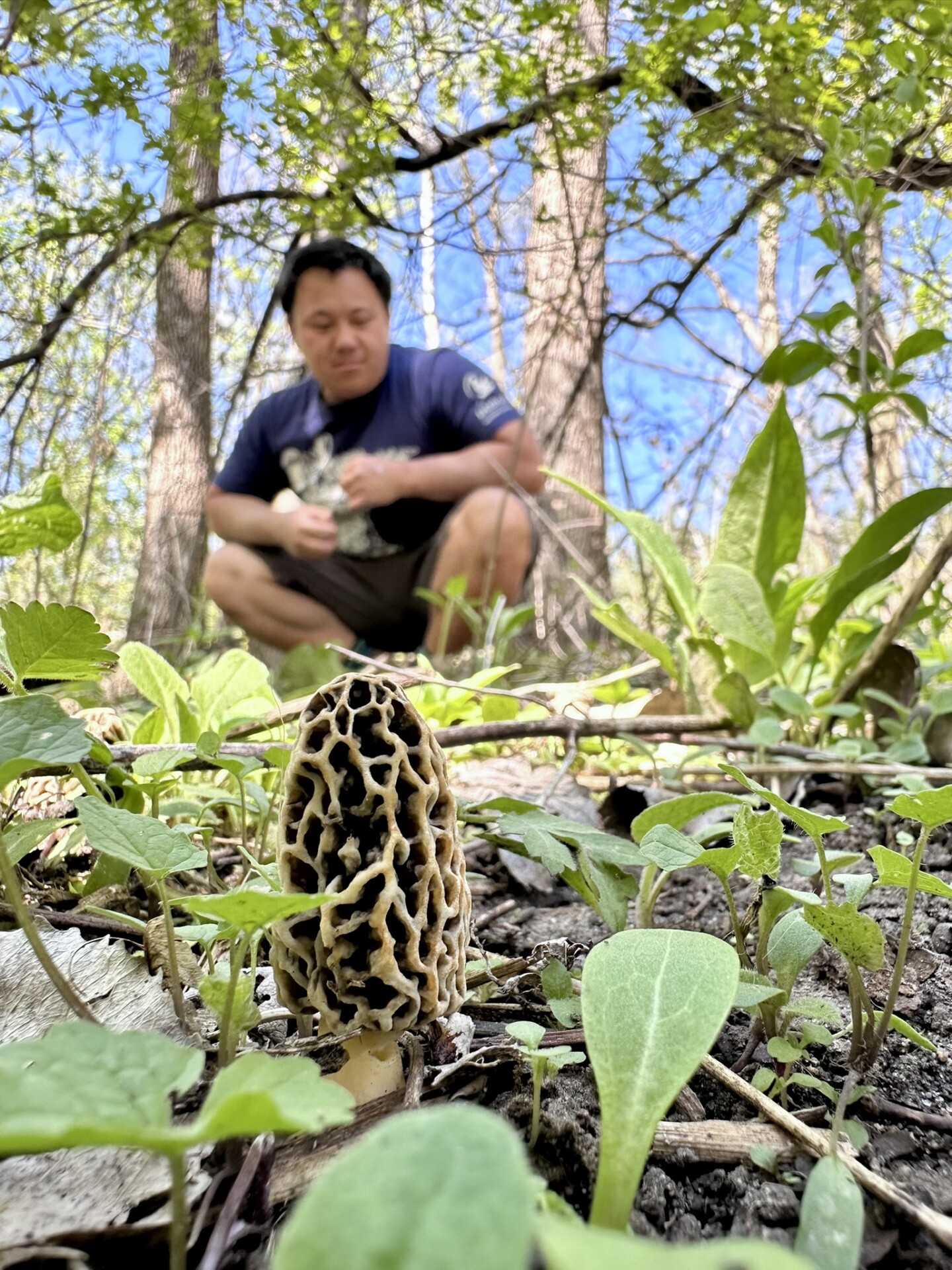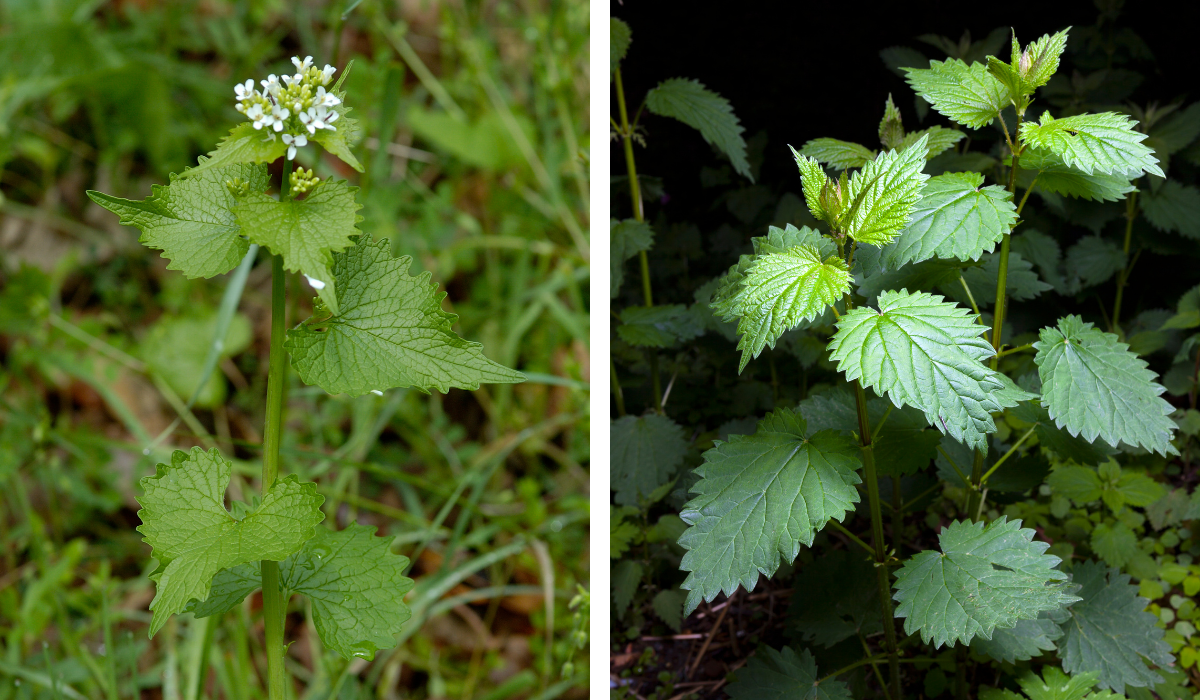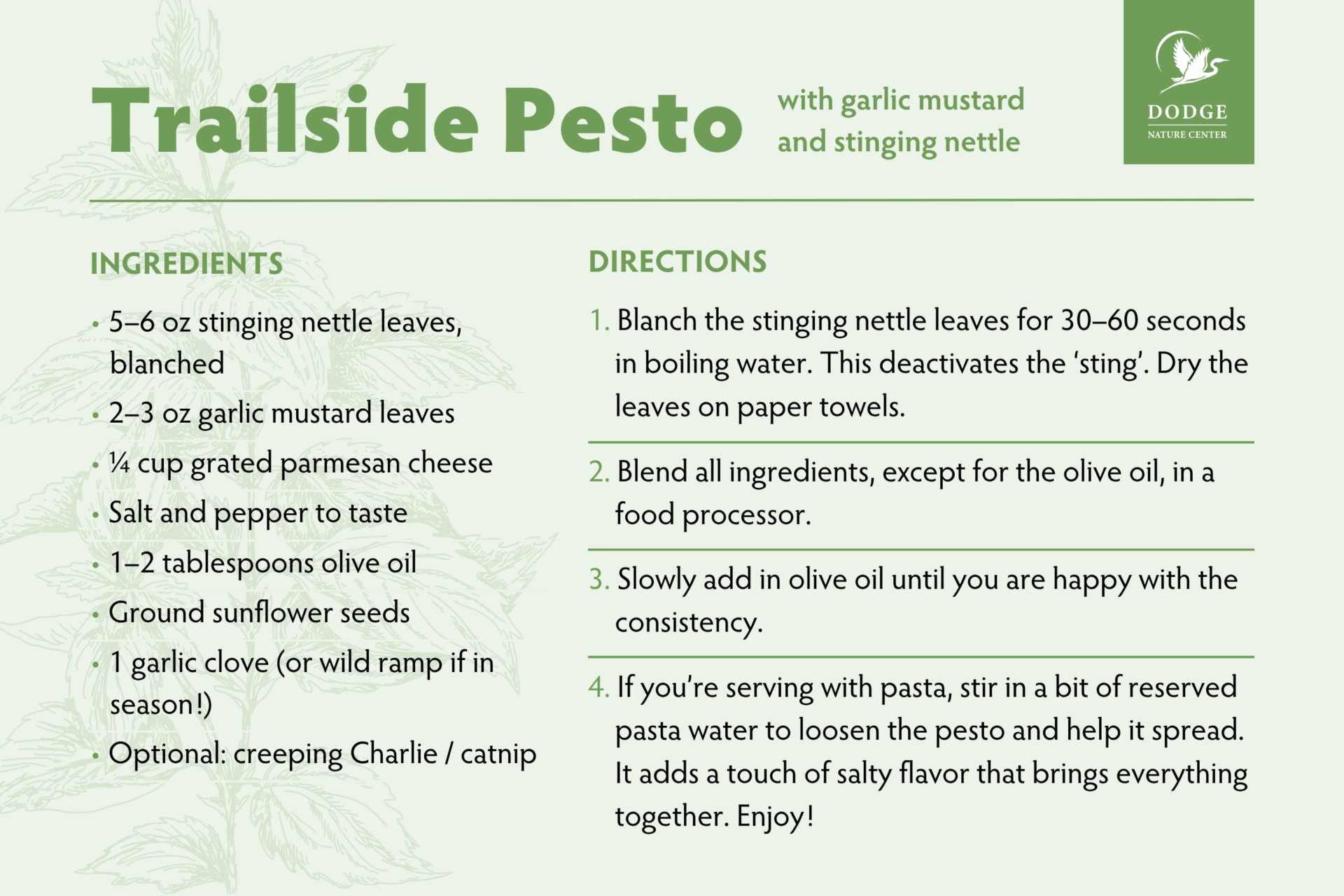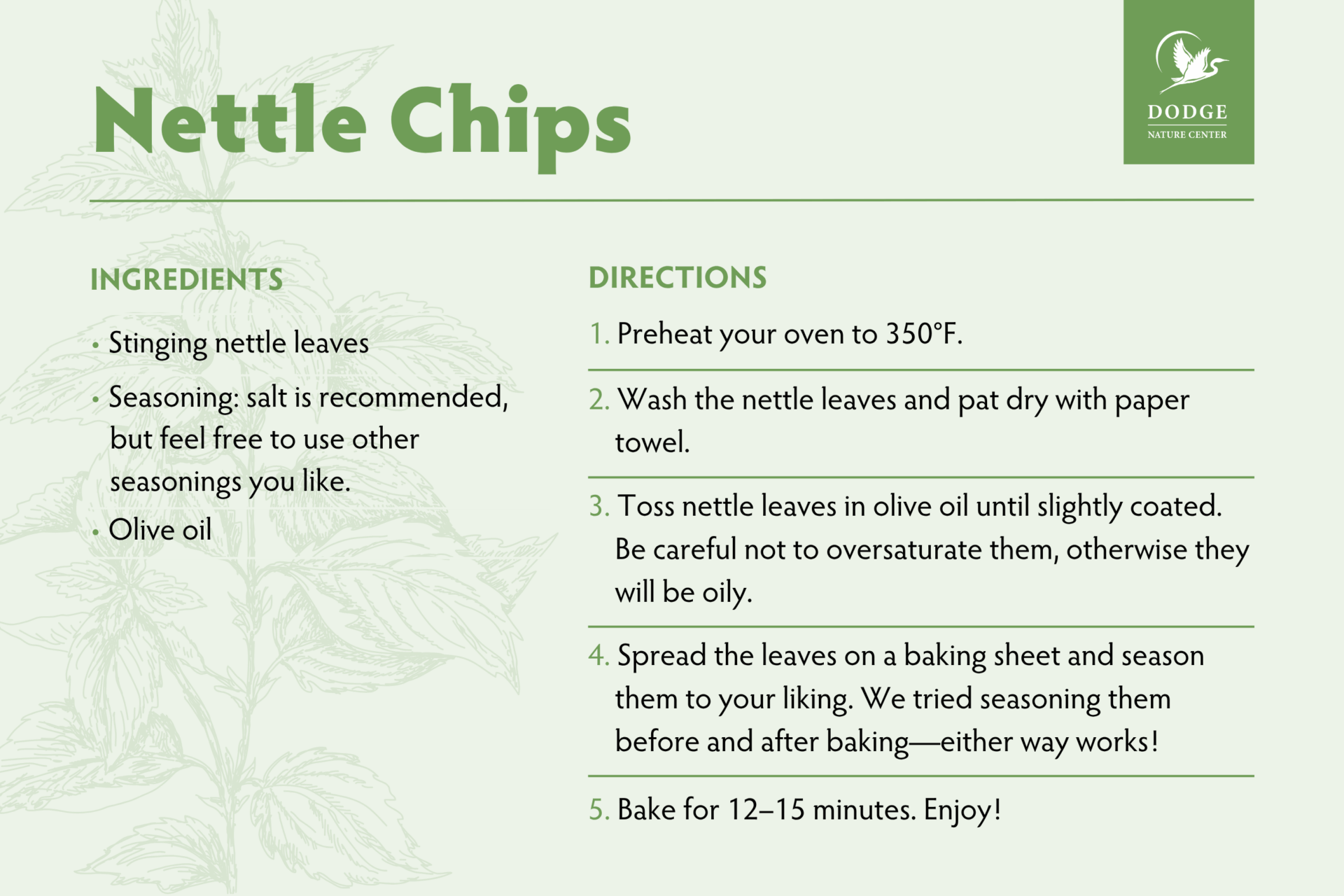As spring turns to summer, the trails at Dodge (and elsewhere in Minnesota) are home to many wild edibles: morel mushrooms, fiddlehead ferns, wild ramps, and more. We recently hosted a few classes that showcased our favorite spring edibles and how to craft them into delicious drinks and bites. If you missed them, don’t worry! There are several edible plants that remain relatively tasty from spring to fall.

Naturalist Andy Vang crouches next to a patch of morel mushrooms at Dodge Nature Center.
Let’s start with two recognizable plants that easily elevate any pasta dish: garlic mustard and stinging nettle. Garlic mustard, though invasive and harmful to forests, has a surprisingly delicious side in the kitchen. Stinging nettle, a native plant better known for its sting than its flavor, is often an unwelcome surprise on the trail. But together, these two underappreciated greens blend into a vibrant, tasty pesto perfect for pasta.

Left: Garlic mustard. Right: Stinging nettle.
Before you head out to forage and cook, make sure you know exactly what you’re looking for. Garlic mustard and stinging nettle are easy to identify, but as with any wild edible, don’t eat anything unless you’re completely sure. Many have look-alikes, and a mistake can be risky. Even when you’ve got the right plant, start with a small taste—everyone reacts differently, and a little caution goes a long way.
Curious about making pesto? Find the recipe below! And if you’ve got extra stinging nettle growing, don’t miss the bonus recipe for nettle chips—a crispy snack that’s a lot like nori (dried seaweed). Get out there and explore these tasty wild edibles. If you give the recipes a try, we’d love to hear how they turn out!


Contributing author: Naturalist Michael Harrison
From the Trails is published monthly in our news & activities emails. Join our email list here.